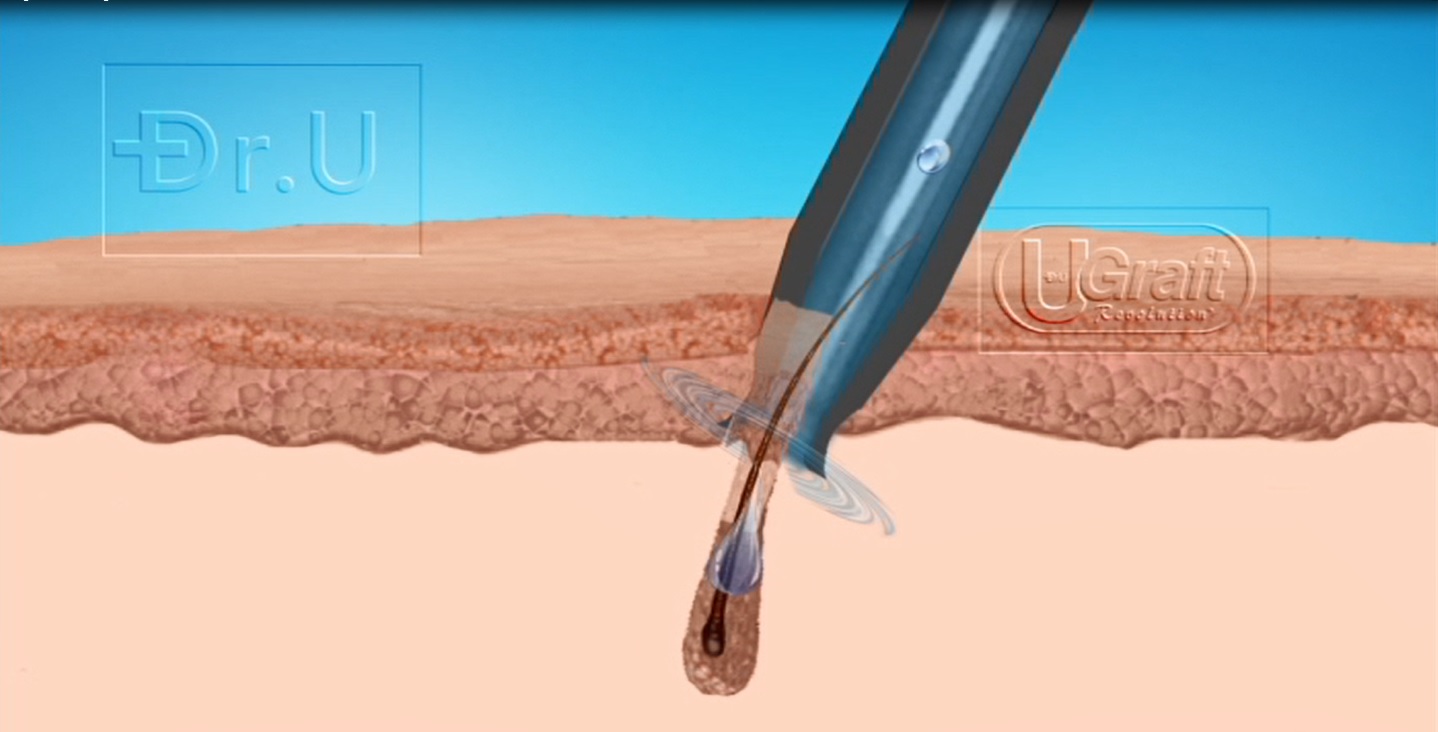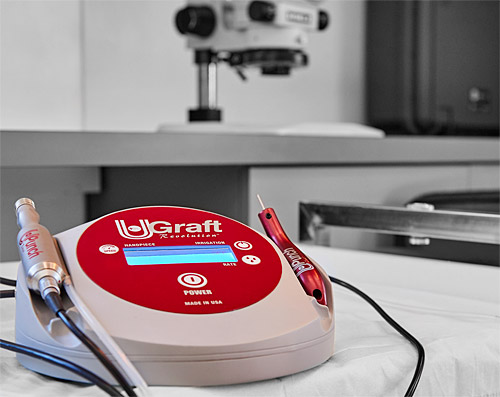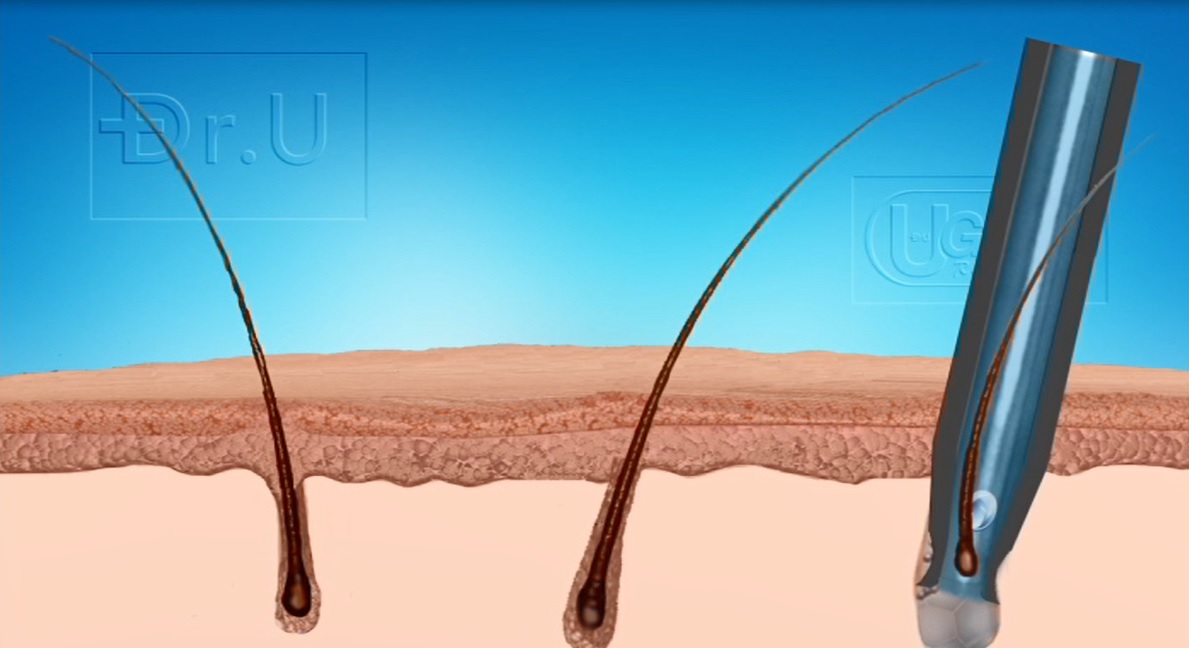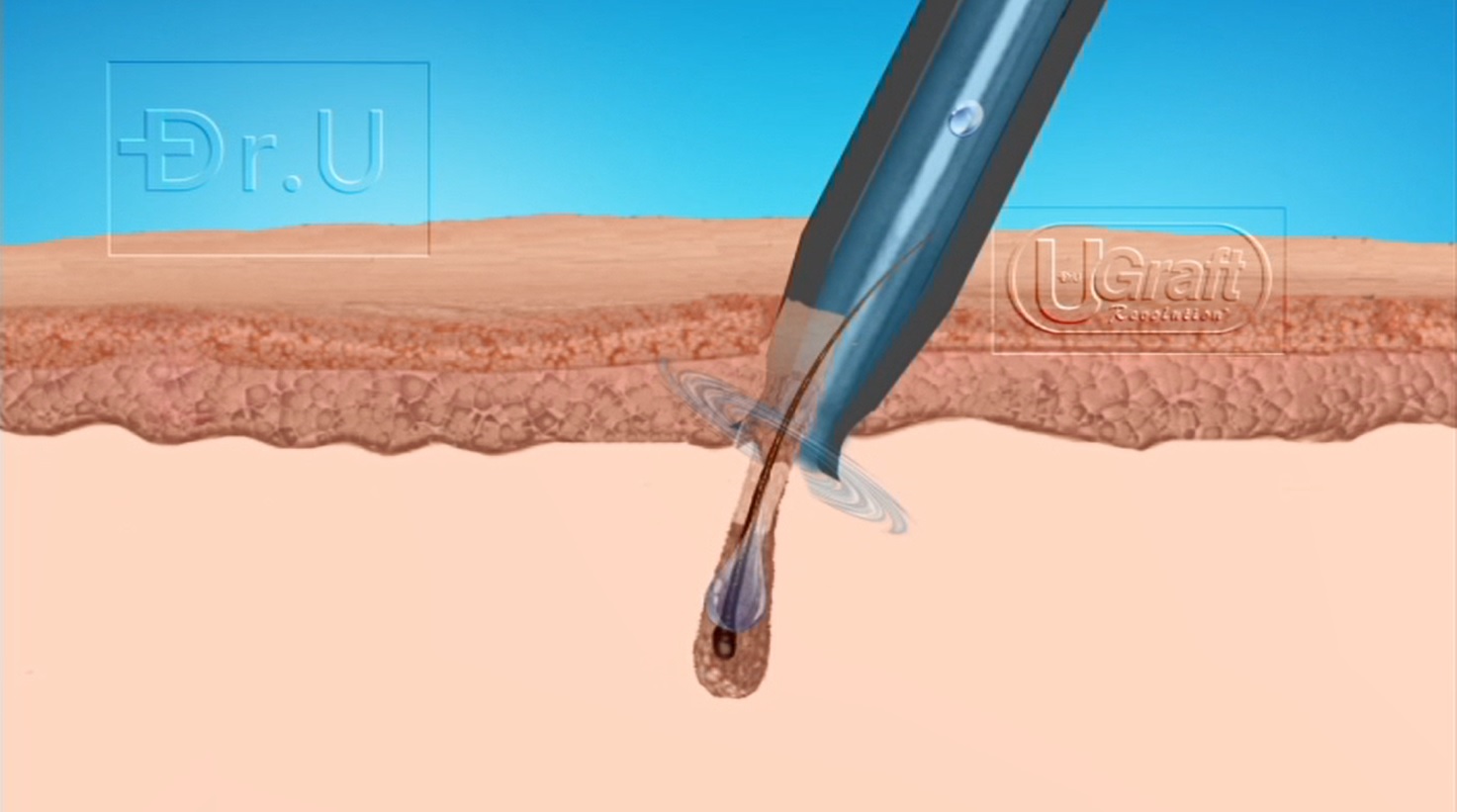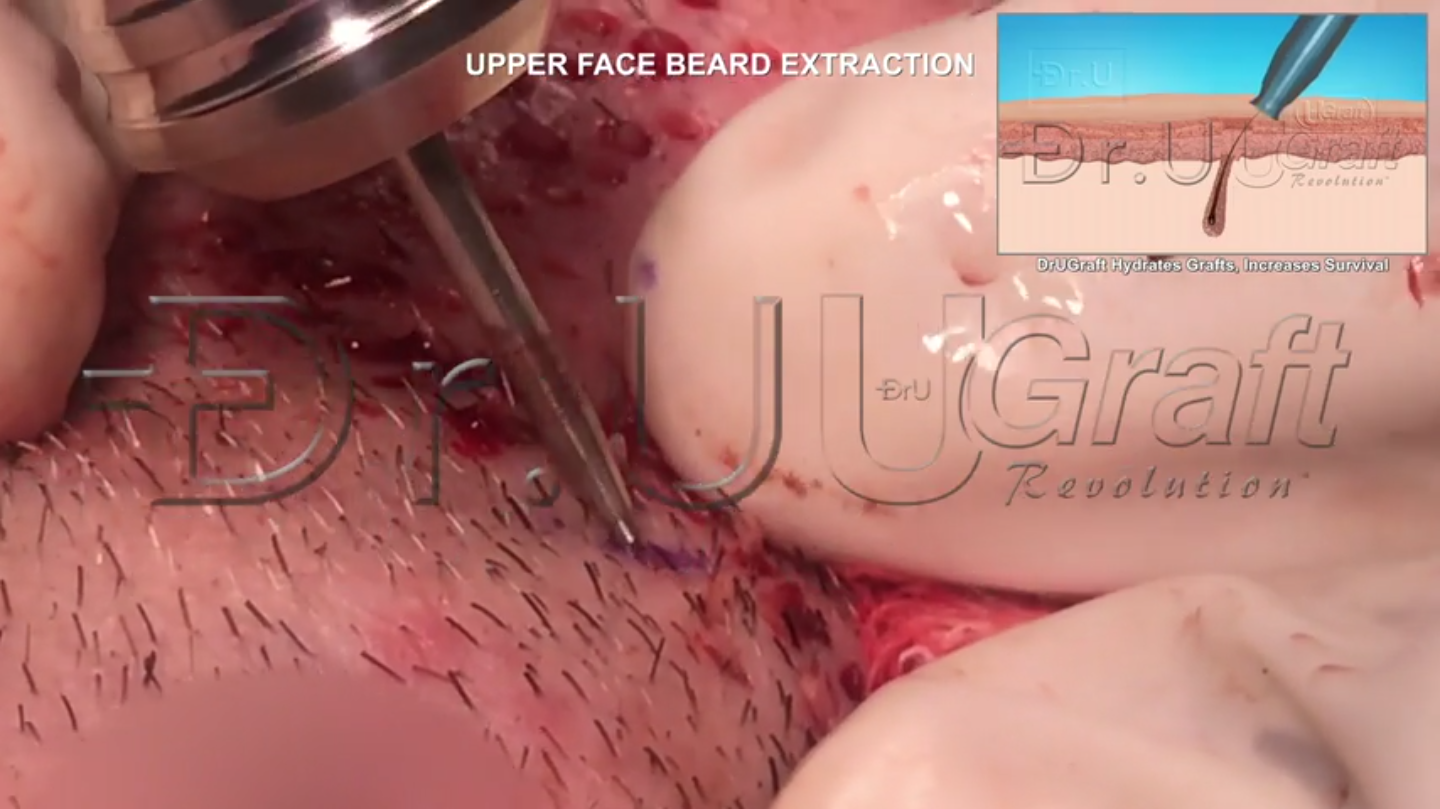The top factor contributing to the death and poor survival of hair transplant grafts is desiccation, also known as ischemia or air drying. It is the leading cause of poor hair growth yield after hair transplant surgery. Hair follicles are exquisitely tiny structures. Therefore, the evaporation of even a small volume of fluid would have a far more detrimental effect on these hair growing structures, compared to larger organs such as the heart, kidneys or liver. Therefore, overcoming hair transplant poor growth due to dryness is an immensely important objective to address for protecting the integrity and functionality of extracted follicles.
Dr.UGraft’s fluid integration system offers a tangible reliable system for consistently helping newly extracted follicles to stay hydrated during FUE scoring. It is also the only suction-free hair transplant technology in the world which offers this capability. Preventing air drying gives practitioners a greatly improved means for harvesting an abundant quantity of healthy, reliable grafts that can then thrive in the recipient area to produce the growth and coverage that patients count on.

